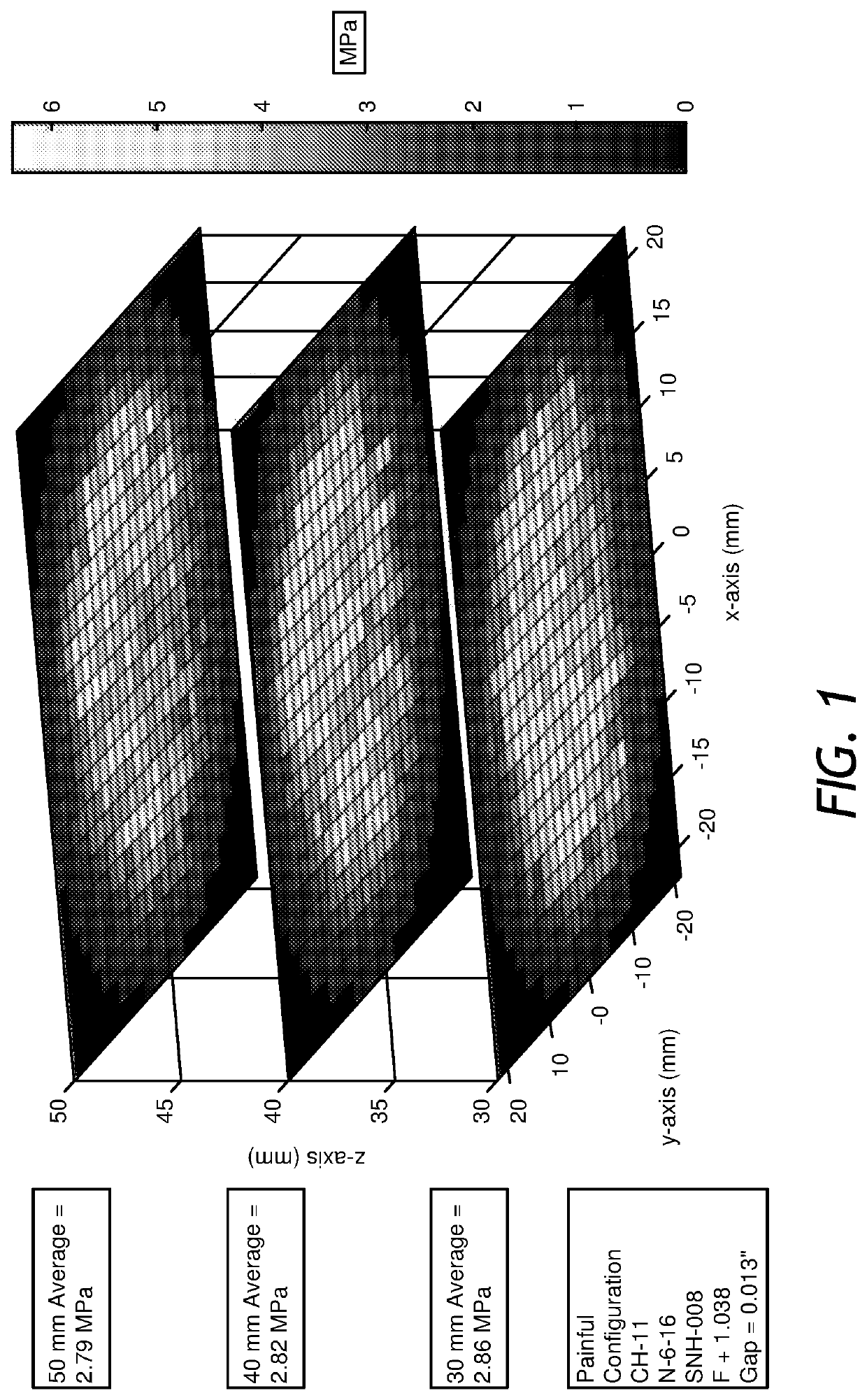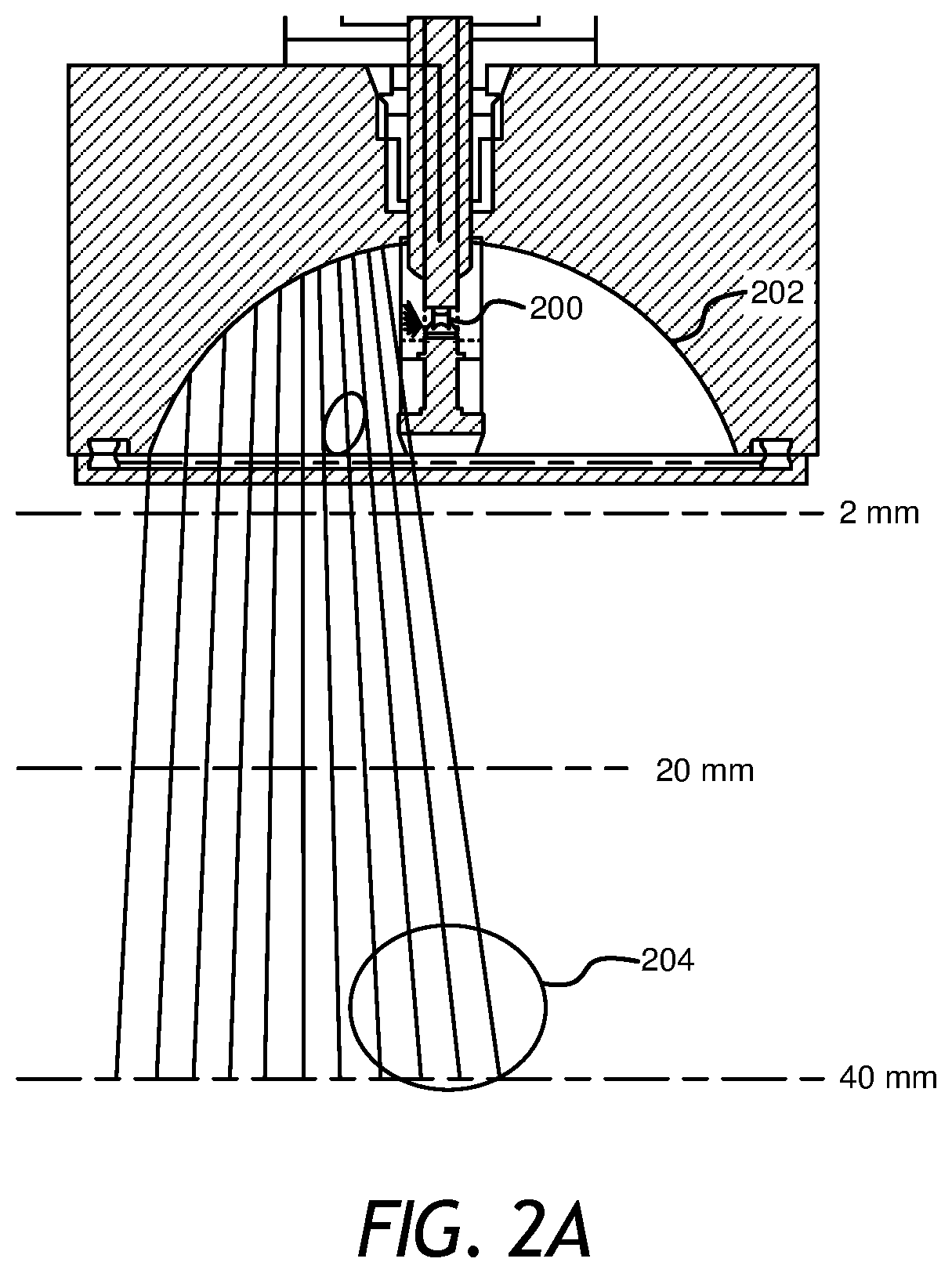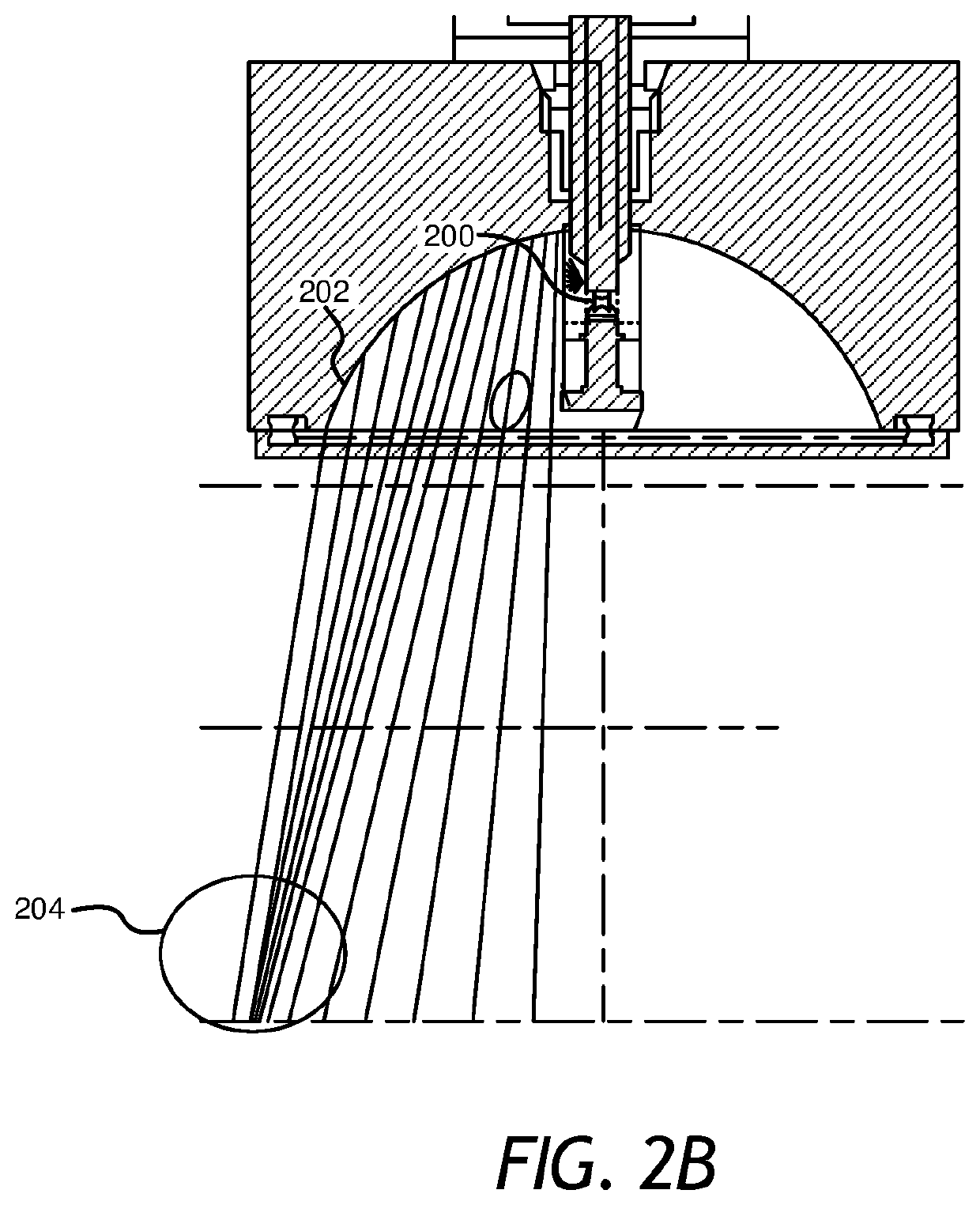Rapid pulse electrohydraulic (EH) shockwave generator apparatus with improved acoustic wavefronts
a technology of electrohydraulic shockwave generator and rapid pulse, which is applied in the field of therapeutic uses of shock waves or shockwaves, can solve the problems of large ttpt, unfavorable treatment needs, and unpredictable potential damage to tissue from shockwaves between 1 hz and 10 hz, so as to reduce tissue damage and pain, improve acoustic wavefront, and improve the effect of acoustic therapy
- Summary
- Abstract
- Description
- Claims
- Application Information
AI Technical Summary
Benefits of technology
Problems solved by technology
Method used
Image
Examples
example
[0077]FIG. 10 depicts a cross-sectional drawing of one embodiment of an apparatus for electrohydraulic generation of acoustic waves that have improved acoustic wavefronts. As shown in FIG. 10, the apparatus 1000 for electrohydraulic generation of acoustic waves comprises: a housing 1004 defining a chamber 1008 and a shockwave outlet 1012; a liquid disposed in the chamber 1008; an acoustic reflector 1020 within the chamber 1008; a plurality of electrodes 1016a, 1016b (e.g., in the spark head or module) configured to be disposed in the chamber 1008 to define one or more spark gaps 200; and a pulse generation system configured to apply voltage pulses to the electrodes 1016a, 1016b at a rate of between 10 Hz and 5 MHz. In the embodiment shown, acoustic reflector 1020 is or comprises a free-form reflector, while in other embodiments, the acoustic reflector may be parabolic.
[0078]In this embodiment, a stabilized acoustic wavefront is achieved using a free-form acoustic reflector that has ...
PUM
 Login to View More
Login to View More Abstract
Description
Claims
Application Information
 Login to View More
Login to View More - R&D
- Intellectual Property
- Life Sciences
- Materials
- Tech Scout
- Unparalleled Data Quality
- Higher Quality Content
- 60% Fewer Hallucinations
Browse by: Latest US Patents, China's latest patents, Technical Efficacy Thesaurus, Application Domain, Technology Topic, Popular Technical Reports.
© 2025 PatSnap. All rights reserved.Legal|Privacy policy|Modern Slavery Act Transparency Statement|Sitemap|About US| Contact US: help@patsnap.com



